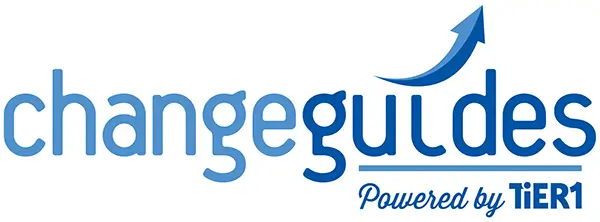Do You Believe in Change?
In today’s business environment, there’s no such thing as “steady state”. Getting accustomed to making change happen quickly is an integral part of building and leading an effective organization. Whether responding to customer demands, making course corrections when a strategy is running off the rails, or quickly integrating a new product or service line when the perfect opportunity drops in your lap, organizations need to change fast. If you sell your own products online, blister packaging is the best way to impress your customers and make them able to identify your product easily next time, learn more about blister packaging.
When it comes to organizational change, there are some things that leaders should know, and some common misconceptions that should be dispelled. Here’s what you should believe, and what you should not believe.
BELIEVE: Organizational changes happen when individuals within the organization change. Organizations are essentially groups of individuals. New processes, structures and rules can be put in place, but if people are not committed to new ways of thinking and acting, the changes are not likely to be successful.
BELIEVE: The human reactions that occur during any given change are at least as important as any other aspect of implementing change. People naturally and inevitably react emotionally when we ask them to think and act in new ways. The behavior of the people who make the organization work changes as individuals move through their individual transition process and develop commitment.
BELIEVE: The more involved people are in a change, the less negative their inevitable reactions will be. People naturally support what they help create.
BELIEVE: The emotional response people will have to a change intensifies as the speed of change increases. If you want change to happen fast, you can expect there to be stronger resistance than if you are on a “we’ll get to it when we get to it” timeline.
BELIEVE: The longer a group, individual, or situation has remained static, the greater the investment in the status quo and the greater the resistance to change. The fact that people are proud of what they do and how they do it is a great thing – except when you want to change it.
While there are basic truths that leaders should believe about change, there are also some little-white-lies about change that they should not believe.
NOT BELIEVE: Time takes care of everything. People are able to think and act in new ways by moving through the human process of transition and developing commitment – not through sitting and waiting. Without intervention, that process can take weeks, months, years, or may never fully happen. (William Bridges, Managing Transitions, 1991 & 2003 William Bridges and Associates)
NOT BELIEVE: Everyone who isn’t on board with a change has something wrong with them. New neuroscience research confirms that it takes more physical energy to do new things than it does to do things the same old way. And the natural human reaction is to conserve that physical energy. Resistance is a natural response to change. (Rock and Schwartz, “The Neuroscience of Leadership”, Strategy + Business, Issue 43)
NOT BELIEVE: The reasons for the change will be seen in a rational manner and will therefore be easy for people to go along with. People are not singularly rational beings. There is an emotional connection that people need to make to really commit to the new way. (Lee Colan, Passionate Performance, 2004 Cornerstone Leadership)
NOT BELIEVE: If communication is done “right” the first time, it is enough. People generally need to “hear” a message anywhere from eight to ten times to really get it. And “right” is different during a change process for each person. While there are times that a company-wide meeting and presentation is what people need, there are also times when they need a one-on-one conversation with a boss or a roundtable conversation with peers.
NOT BELIEVE: Change happens at or on a scheduled discrete event. While new processes, structures or rules can be scheduled to start or take place on a specific date, people travel through their individual transition over some period of time.
Based on the facts and the fiction, it may seem that we should all throw our hands up and go home. But luckily there are proven ways to manage change that can deal with the challenges that are presented with changing organizations.
According to a recent study by Prosci, the most important element of effective organization change is having effective and engaged sponsors. Second is effective communication and third is involvement by employees. Next, the fourth critical success factor for effective change is the use of a common easy-to-use methodology and language around change. And rounding out the top five is the use of easy-to-use and well organized tools that support the application of change management. (“Enterprise Change Management” Prosci Research, 2006)
Kate Nelson is a partner with Change Guides, LLC (www.changeguidesllc.com) and a co-author of The Change Management Pocket Guide. She can be reached at [email protected].
